SUEZ site-seeing | Part 14 | Altens East recycling and resource facility
21st August 2018
Some months in to my new role at SUEZ and I had only been north of the border once, which was back in October 2017 to speak at the Scottish Waste & Resource Conference about Deposit Return Schemes. It seemed only right that I get myself up to Scotland to see a number of our sites, and to see how we operate under a slightly different environmental policy and regulatory regime.
A very early flight from Birmingham was in order to get me up to Aberdeen, home to one of the newest sites in the SUEZ portfolio, Altens East recycling and resource facility.
First stop | Altens East recycling and resource facility
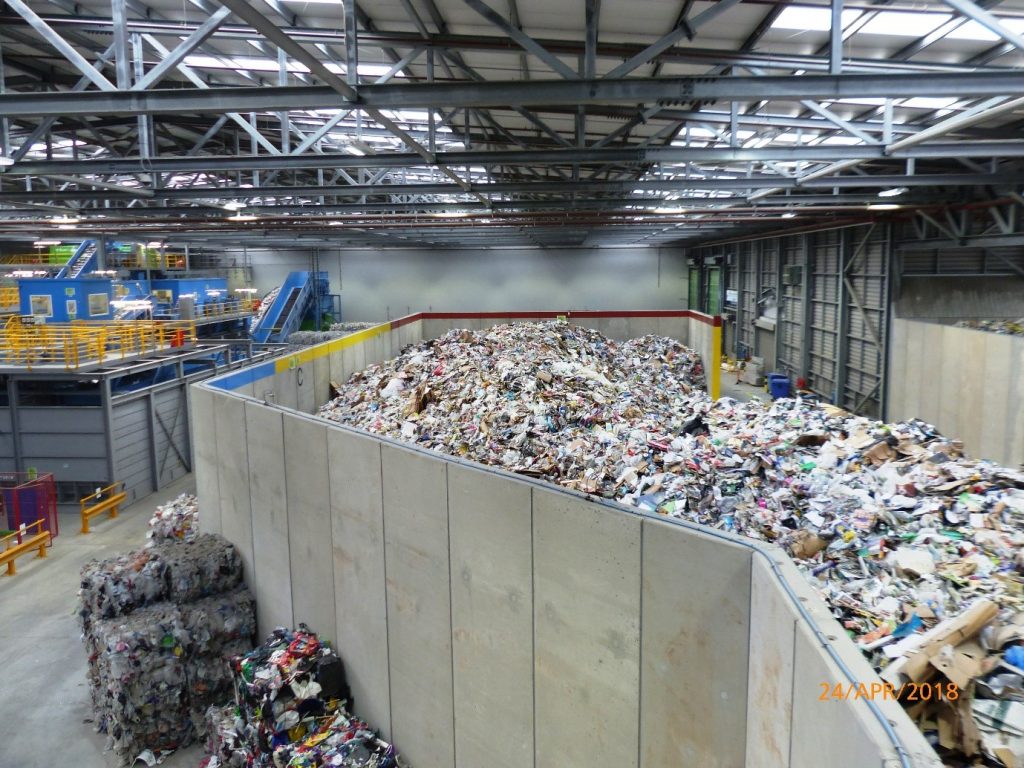
The tipping hall at the Aberdeen materials recycling facility – MRF
The first stop of my two day tour of Scotland was at the Altens East recycling and resource facility on the outskirts of Aberdeen – a joint materials recycling facility (MRF) and refuse derived fuel (RDF) facility. A truly stunning site on the coast with exceptional views out to sea, which on a sunny day was a real bonus, but I was warned by some employees on site that on those cold and windy Scottish days (of which there are many) the sea could be blown into the car park!
This site is part of a 25 year contract with Aberdeen City Council which dates back to 2000. The original plan was for a mini energy-from-waste (EfW) facility to be built on a nearby site, but this fell through at the planning stage and with change in local politics a decision was made to look at alternative processing opportunities, namely a MRF and RDF facility to boost recycling. The construction and building of the new facilities began in January 2016 and the site was fully operational by April 2017.
This site is shared with Aberdeen City Council, who have relocated their refuse collection vehicle (RCV) depot and Waste Management Departmental offices to the site as well.
When I arrived for my visit, the site had been operational for just over 12 months, and had processed 21,000 tonnes of material through the MRF and produced over 34,000 tonnes of RDF for use in energy-from-waste facilities in Europe.
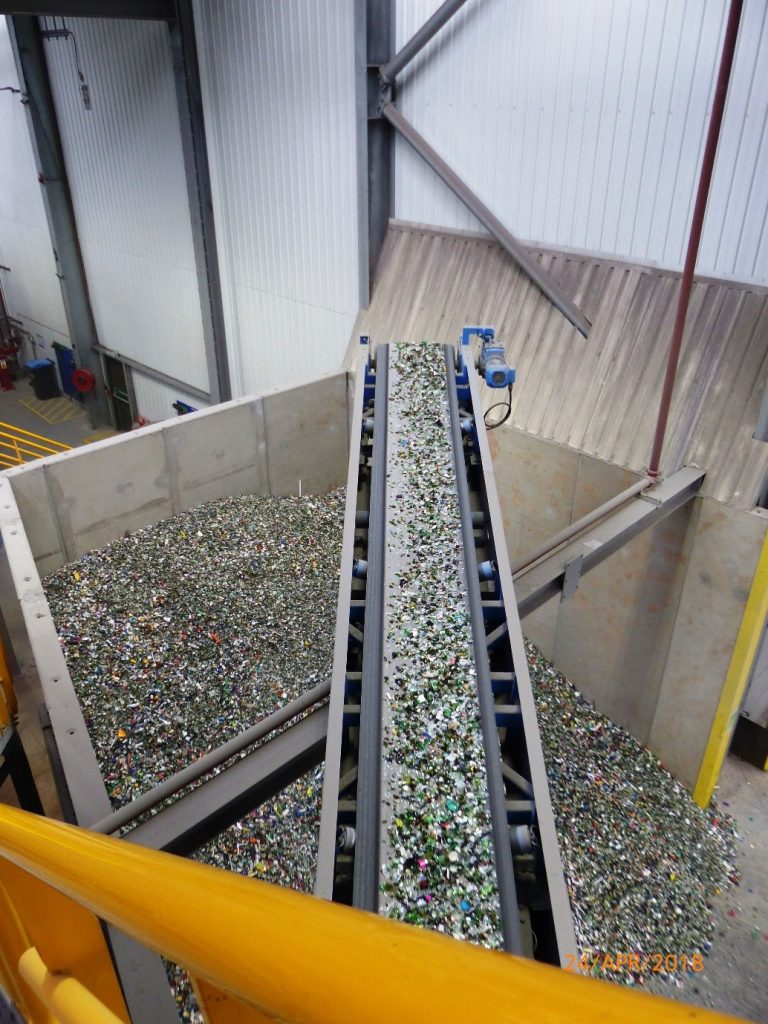
Stage one at the MRF – Glass Extraction
The MRF handles 20 tonnes per hour of commingled recyclables (including glass) from the residents of Aberdeen. It has a similar processing design to our Avonmouth MRF (using disc screens rather than trommels). However, Aberdeen’s facility also has a Stage One glass separation phase, which differs as the site in Avonmouth the facility doesn’t target glass. The glass separation targets 10mm and above (as a mixed colour fraction) which goes off to re-melt. About 30% of all input materials coming onto site are glass, so pulling this off before the rest of the materials go through the MRF is key to keeping the quality of the materials high and reduce the wear and tear on the machinery.
The other dominant material stream is paper (and other fibres), and this is stage two of the MRF process, utilising disc screens to separate 2D and 3D materials. Currently 60% of the paper and card coming into the MRF is being captured. The site is trying a number of different configurations to improve this, and as such additional manpower is needed on the picking belts to do improve quality at various points in the system. As the plant is still in its early operations phase, other snagging issues are being ironed out including some additional over band magnets and eddy current separators on the mixed paper line. It seems to be moving too fast, meaning that some of the cans are flattened through the process and therefore not coming out where they should.
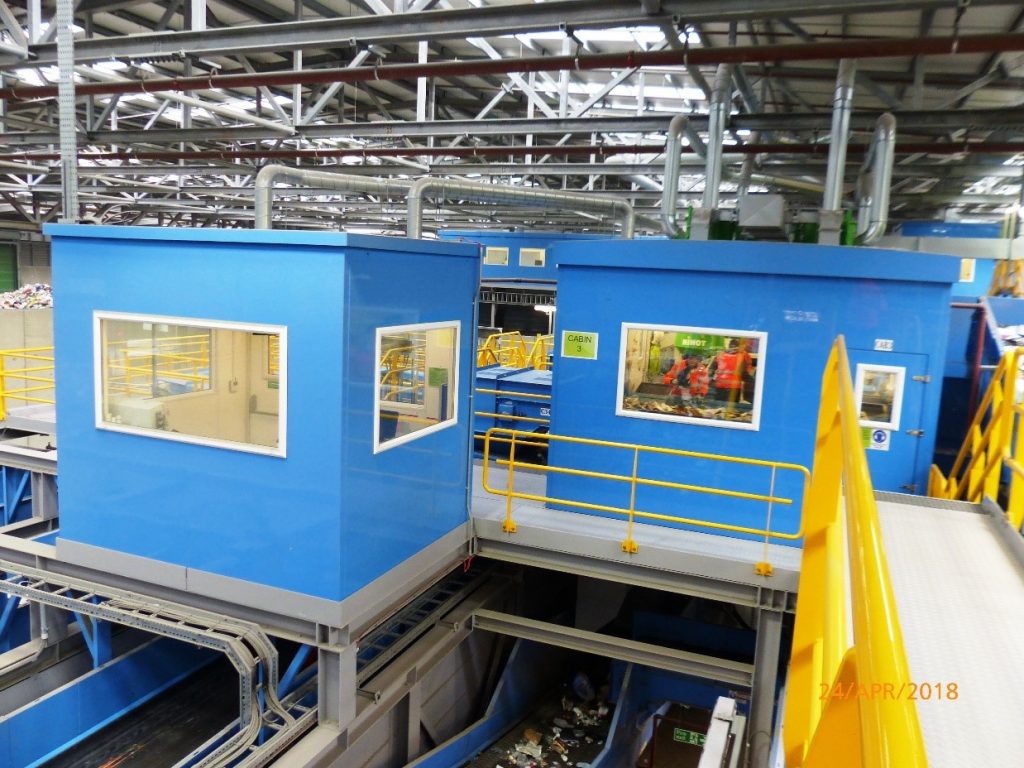
The MRF has a number of picking stations each housed in a micro hut
The final stage (stage three) is all about the cans and the plastics, the site is targeting different plastics including films, rigid plastics, PET, HDPE and other mixed plastics, and can also handle the waxy cartons (usually milk or fruit juice).
The MRF residue goes via the belt to the refuse derived fuel (RDF) plant next door, ensuring there is no loss from the system, and nothing leaves the building thus ensuring odours are kept to a minimum. As with other SUEZ MRF sites there is a strong quality assurance system and regular sampling and monitoring of income loads and the quality of the products. This system can be refined and feedback can be given to our partners at the City Council about contamination levels etc. but on the whole the quality of the input was very high, with clean paper and little left over food on the recyclable materials. The site recycles over 90% of the materials that arrive and sends these on to end markets.
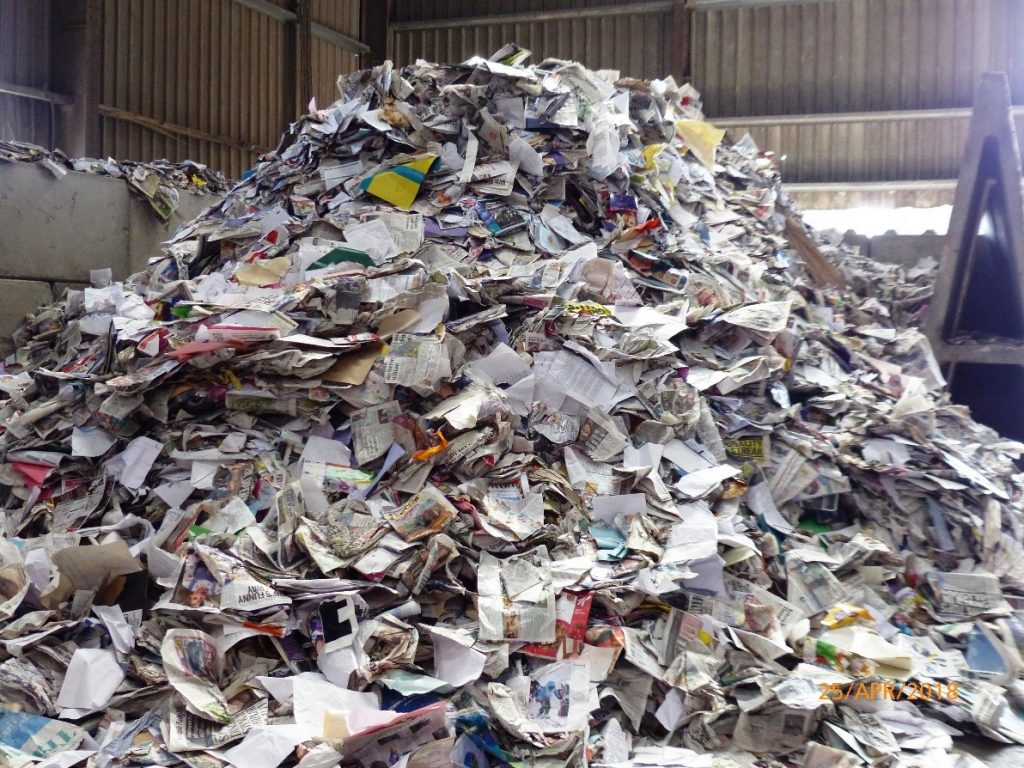
High Quality Paper from Binn Farm MRF waiting for onward transfer
The RDF facility has been designed to help SUEZ process and divert Aberdeen City Council’s non-recyclable waste away from landfill. The material is shredded to around 300mm, then once metals have been removed through over band magnets and eddy current separators (just as in the MRF), the remaining material is baled and wrapped for onward shipment to Norway or Sweden where it is used to generate heat and power in energy-from-waste facilities.
Since the site opened, just over 12 months ago, the landfill diversion rate for Aberdeen City Council has improved from 45% to 85%, and continues to improve as the systems are refined to suit the incoming feedstocks. SUEZ also operate a series of household waste recycling centres (HWRCs) and some Transfer Stations as part of the city contract. We expect to begin diverting residual waste from the HWRC’s into the plant to help Aberdeen City Council to become one of the best performing local authorities in Scotland later this year.
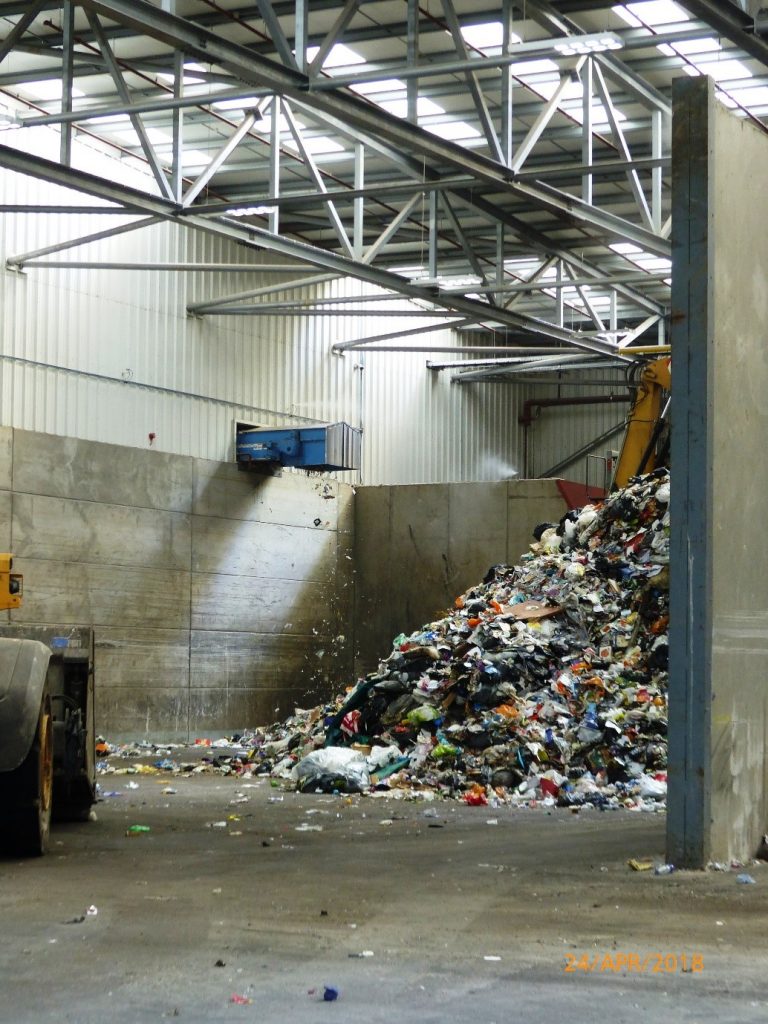
The residue line from the MRF feeding the RDF plant, waiting to be fed onto the conveyors
This is a truly inspirational site, delivering high quality solutions for the residents of Aberdeen. The staff were really on the ball, even stopping me before entering the building because I was taking a photo of the entrance sign! They take a great deal of pride in their work, and value their partnership working with the city team who are also located on site. I was thoroughly impressed, as were the Scottish Environment Protection Agency (SEPA) team who visited the site whilst I was there to have a look around.
But after a busy morning of looking at process engineering, it was off to another part of Aberdeen to check out two of the HWRCs we operate on behalf of the city, and thankfully the sun was still shining!
Tweet- Aberdeen
- Aberdeen City Council
- Altens East
- Glass recycling
- Materials Recycling Facility
- MRF
- Plastic
- recycling
- study tour

Thank you for posting this – a really helpful explanation. I’m an Aberdeen resident and I’d like to know more about what happens to our plastic once it is separated out. Is it made into new plastic containers here in Aberdeen? Is it sent elsewhere for recycling? Or is it burnt? Thanks for your help with this.